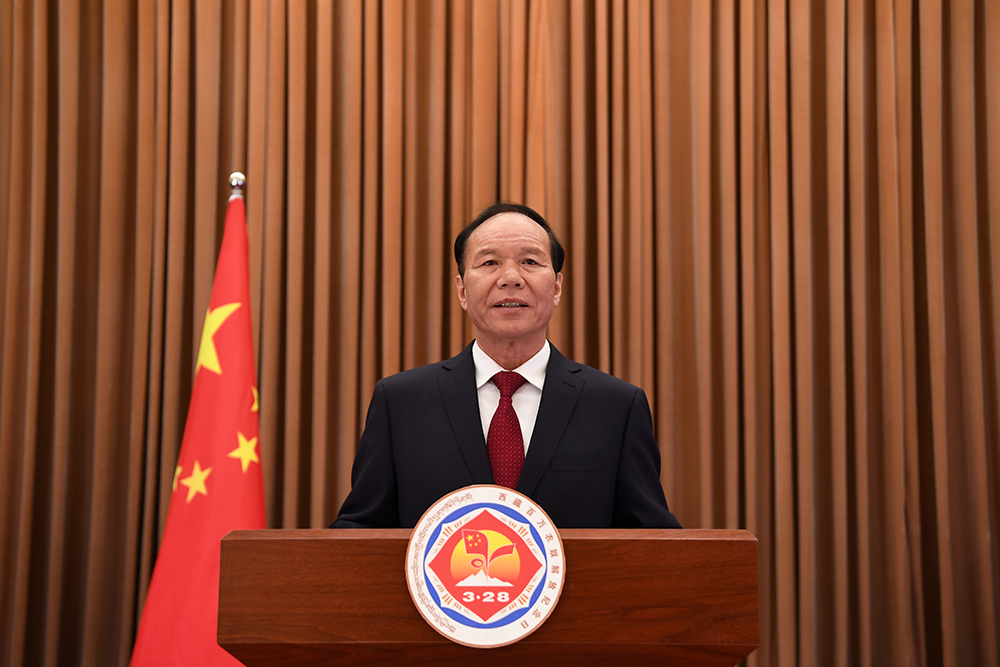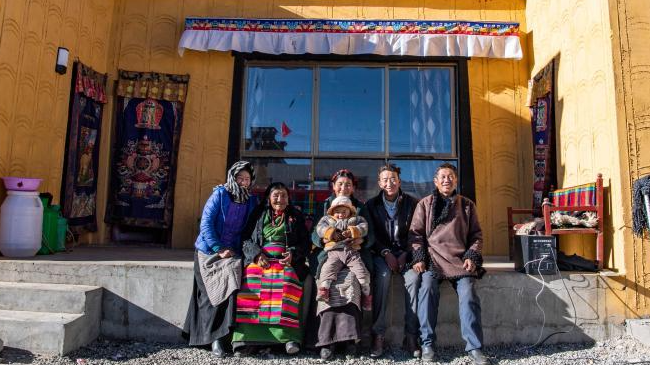This year marks the 62nd anniversary of the democratic reform of Tibet. On March 28, 1959, then Chinese Premier Zhou Enlai issued a State Council Order declaring the "dissolution" of the government of Tibet, which effectively abolished the hierarchic social system and liberated about 1 million Tibetans from serfdom.

Potala Palace square in Lhasa, capital of southwest China's Tibet Autonomous Region, March 28, 2019. /Xinhua
Potala Palace square in Lhasa, capital of southwest China's Tibet Autonomous Region, March 28, 2019. /Xinhua
Since the democratic reform that started 62 years ago, Tibet has made historic achievements and undergone tremendous changes, said Qizhala, chairman of the government of southwest China's Tibet Autonomous Region, in a television address on Saturday.
He said the democratic reform completely freed local people from feudal political oppression and changed the production relations of the old Tibet, enabling 3.5 million Tibetans to shake off poverty and embrace a new life.
Experts say the emancipation helped change the local economy by increasing the mobility of the labor force, thus enabling factories and other businesses to employ locals. It is also a precondition for reforms in administration and local government.
Tibet: How China's toughest battleground defeated absolute poverty?

Qizhala, chairman of the government of Tibet Autonomous Region, gives a television speech in Lhasa, capital of southwest China's Tibet Autonomous Region, March 27, 2021. /People's Government of the Tibet Autonomous Region
Qizhala, chairman of the government of Tibet Autonomous Region, gives a television speech in Lhasa, capital of southwest China's Tibet Autonomous Region, March 27, 2021. /People's Government of the Tibet Autonomous Region
Qizhala said currently, Tibet's main working-age population has an average of 10.2 years of education. A large number of Tibetans live in remote areas and have moved into new homes built through the government's ecological relocation program, under which the government gives compensation and provides new homes for those who moved out of ecologically fragile areas.
The average life expectancy among locals has also increased from 35.5 years in 1959 to 71.1 years nowadays. The ecological environment has also improved, with the comprehensive green coverage of the land reaching 47 percent.
"Today's Tibet is fully accessible to railways, airlines, highways, running water, power grid, as well as internet," he said. "On the 1.2-million-square kilometers of land, farmers and herdsmen no longer have to worry about food, clothing, education and medical care. People are living a better life."
Tenzin Tsomo, a 78-year-old Tibetan, was born a serf. When she was a little girl, she and her seven family members lived in a tent and made a living by herding sheep for a temple in exchange for food.
"When I was eight or nine years old, my family could not afford to pay the temple debts, so my parents ran away with the sheep in the night," Tenzin said.
The family tried to restart their life in another place. But the temple found them. Her father was severely beaten for stealing the sheep and became disabled for life. The temple also took away their tent, and they had to live in a cave, making their living by begging on the street or doing odd jobs for wealthy families.

Tenzin Tsomo (2nd L) poses for a picture with her family members, Shigatse City, southwest China's Tibet Autonomous Region, February 25, 2021. /Xinhua
Tenzin Tsomo (2nd L) poses for a picture with her family members, Shigatse City, southwest China's Tibet Autonomous Region, February 25, 2021. /Xinhua
"We wouldn't steal if we could survive," Tenzin said.
Before the emancipation, people like Tenzin represented about 95 percent of the total population in Tibet. In the hierarchical society of serfdom and theocracy, the serf-owner class, composed of officials, nobles and upper monks of temples, controlled most of the land and farms. They enslaved serfs and subjected them to excoriating taxes and levies so that many serfs inherited heavy debts from their birth.
In 1959, the old Tibet government was dissolved, and Tenzin, for the first time, gained freedom and got land, houses and livestock. She later met her husband and got married, which would have been impossible if they were still serfs because the serf-owners controlled their marriages.
Over the past 62 years, Tibet's GDP has grown from 174 million yuan ($25.9 million) in 1959 to 180 billion yuan in 2020, an average annual increase of 9.5 percent, according to official data.
Tibet was the first autonomous region in China to provide free education for 15 years, and the illiteracy rate among young and middle-aged people has dropped to 0.52 percent, according to official data. Furthermore, medical insurance has covered the whole population in Tibet.
(Tenzin Tsomo's story was contributed by Tibet.cn, a local news website)

